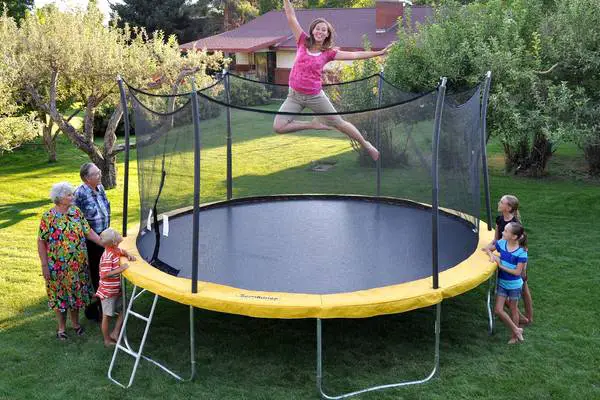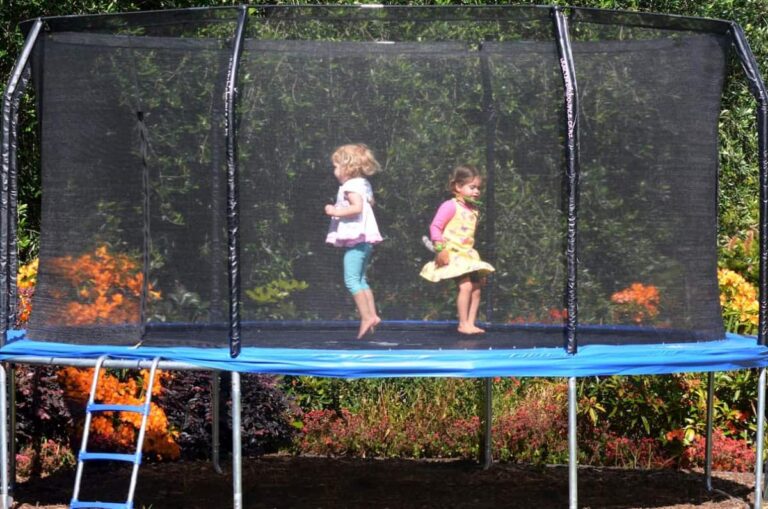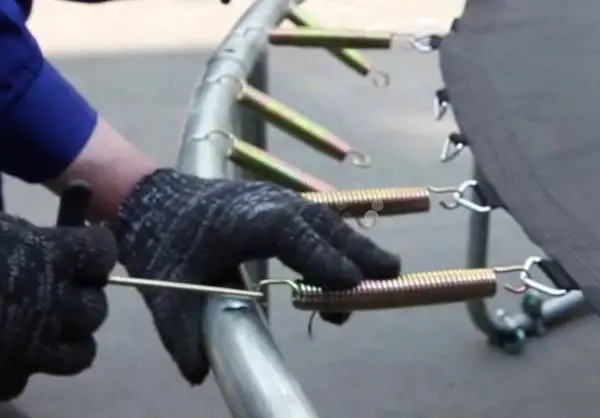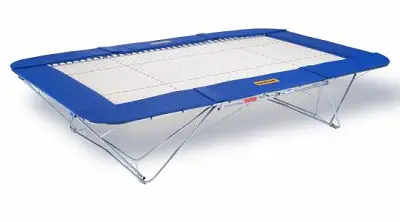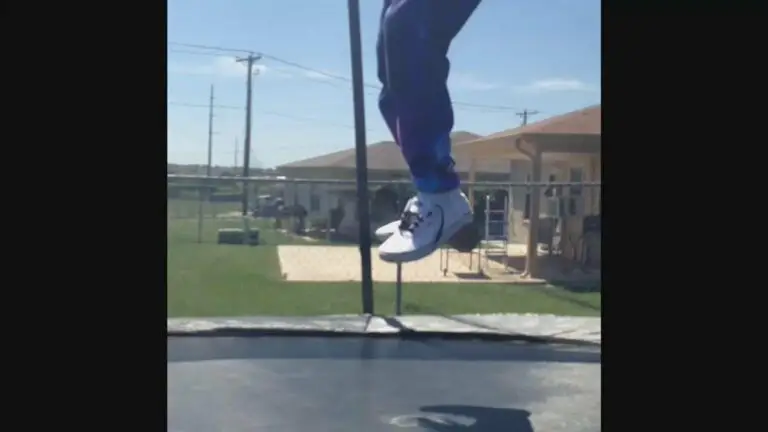Trampolines are a popular addition to backyard spaces, providing endless fun and entertainment for both children and adults. If you have a decking area in your backyard, you may be wondering if it is suitable for placing a trampoline. In this comprehensive guide, we will explore the question of whether a trampoline can be placed on decking and provide you with relevant information and guidelines to help you make an informed decision.
Understanding Decking
Decking refers to a raised platform made of various materials, such as wood or composite, that is typically built in outdoor spaces like gardens or patios. It provides an extension of the living area, creating a space for relaxation, entertainment, and outdoor activities. Decking is designed to withstand the elements and support the weight of furniture, plants, and people.
Decking materials vary in their strength and durability. Common types include pressure-treated wood, cedar, and composite decking. Pressure-treated wood is treated with chemicals to resist rot and decay, making it a popular choice for outdoor structures. Cedar is naturally resistant to rot and insects, while composite decking is made from a combination of wood fibers and recycled plastic, offering enhanced durability and low maintenance.
The structure and weight capacity of decking are crucial considerations when determining whether it can support a trampoline. Decking is typically designed to support static loads, such as furniture and people, rather than dynamic loads like those generated by a trampoline. Placing a trampoline on decking that is not built to withstand the additional weight and movement can lead to structural damage and safety hazards.
Can You Put A Trampoline On Decking?
Now, let’s address the main question – can you put a trampoline on decking? Technically yes, you can do it. But it actually depends on several factors that need to be taken into consideration.
Firstly, you need to check the weight limit of your decking. Trampolines can be heavy, especially when considering the weight of the frame, springs, and jumping mat, as well as the weight of the users. Ensure that your decking is structurally capable of supporting the weight of the trampoline and the people using it. If in doubt, consult a professional to assess the load-bearing capacity of your decking.
Secondly, consider the height of the trampoline. Ensure that there is enough clearance between the trampoline and any overhead structures, such as roofs or tree branches. The trampoline should be placed on a level surface to prevent any tilting or instability.
Lastly, it is important to follow the manufacturer’s guidelines for installing a trampoline on decking. Some trampoline models may have specific requirements or recommendations for placement on different surfaces, including decking. Make sure to read and understand the instructions provided by the manufacturer to ensure the safety and longevity of your trampoline.
Factors to Consider Before Placing a Trampoline on Decking
Before placing a trampoline on your decking, there are several important factors to consider to ensure the safety of both the trampoline users and the decking itself.
1. Determine the weight limit of the decking and the trampoline
Every decking has a weight limit specified by the manufacturer. It is essential to know this limit and compare it to the weight of your trampoline, including the weight of the users. Additionally, consider the weight capacity of the trampoline itself, as it may have its own limitations. Ensure that the combined weight of the trampoline and users does not exceed the weight limit of the decking.
2. Consider the size and placement of the trampoline on the decking
The size of the trampoline is another crucial factor to consider. Measure the dimensions of your decking and ensure that it can accommodate the trampoline without compromising the space available for other activities. Additionally, consider the clearance height above the trampoline to avoid any overhead obstructions such as tree branches or roof eaves.
The placement of the trampoline on the decking is equally important. Ensure that it is positioned on a level surface to prevent any instability or tipping. Avoid placing the trampoline near the edges of the decking, as this can increase the risk of falling off.
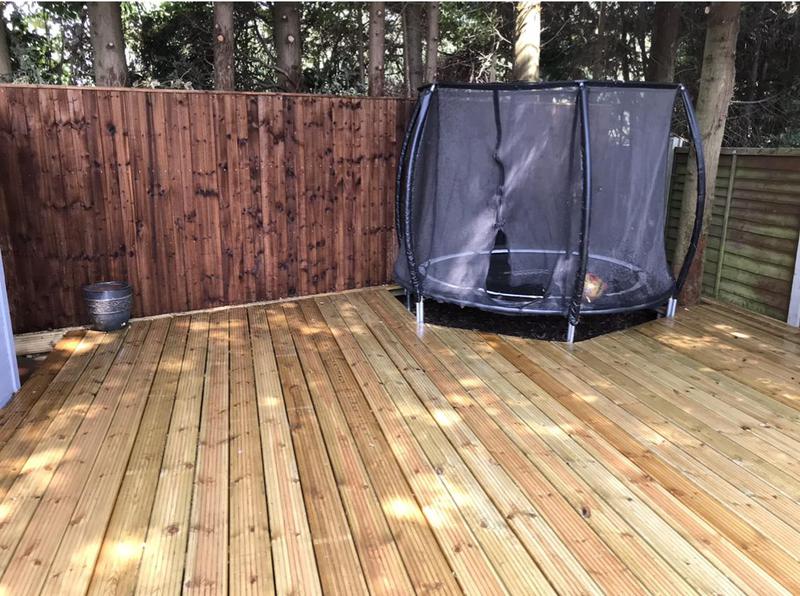
Credit: www.bestkidstrampoline.com
3. Evaluate the condition of the decking and its ability to support the trampoline
Inspect the condition of your decking thoroughly before placing a trampoline on it. Look for signs of wear and tear, rot, or structural damage. Weak or damaged decking may not be able to support the weight and movement of a trampoline. If you notice any issues, it is advisable to repair or reinforce the decking before proceeding.
4. Discuss the importance of securing the trampoline to prevent movement or damage to the decking
To ensure the safety of the trampoline users and the integrity of the decking, it is crucial to secure the trampoline properly. Use anchor kits or straps to secure the trampoline to the decking, preventing any movement or shifting during use. This will reduce the risk of accidents and minimize potential damage to the decking caused by the trampoline’s movement.
Alternatives to Placing a Trampoline on Decking
If you have concerns about placing a trampoline on your decking or if your decking is not suitable for this purpose, there are alternative locations to consider.
One option is to place the trampoline in your yard. Ensure that the yard has a level surface and sufficient space to accommodate the trampoline safely. Clear the area of any obstacles, such as rocks or sharp objects, to minimize the risk of injuries.
Another option is to create a dedicated trampoline area in your backyard. This can be done by installing a safety enclosure or building a trampoline pit. A safety enclosure consists of a net surrounding the trampoline, preventing users from falling off. A trampoline pit involves digging a hole and placing the trampoline inside, reducing the height and potential fall risk.
Each alternative location has its own benefits and drawbacks. Consider factors such as space availability, visibility, and accessibility when deciding on the most suitable option for your trampoline.
Safety Precautions When Using a Trampoline on Decking
If you decide to place a trampoline on your decking, it is essential to prioritize safety and take the necessary precautions. Here are some tips to ensure a safe trampoline experience:
- Adult supervision: Always have an adult present to supervise trampoline use, especially when children are involved. This will help prevent accidents and ensure that safety guidelines are followed.
- Safety equipment: Provide safety equipment such as padding for the trampoline springs, safety nets, and foam-padded poles. These measures can reduce the risk of injuries and protect users from falls.
- User guidelines: Establish clear rules and guidelines for trampoline use. Educate users on safe jumping techniques, such as avoiding somersaults or double bouncing, to minimize the risk of accidents.
- Regular maintenance: Inspect the trampoline regularly for any wear and tear. Replace damaged parts promptly to maintain the trampoline’s safety and performance.
- Weather conditions: Avoid using the trampoline during adverse weather conditions, such as high winds or thunderstorms. Secure the trampoline or store it indoors when not in use to prevent damage.
It is important to note that using a trampoline on decking carries inherent risks. The dynamic nature of trampolining can put stress on the decking structure, potentially leading to damage or accidents. Therefore, it is crucial to weigh the risks and benefits before making a decision.
Conclusion
Placing a trampoline on decking requires careful consideration and evaluation of various factors. Understanding the weight capacity of the decking and the trampoline, ensuring proper placement and securing the trampoline, and evaluating the condition of the decking are essential steps to take.
If your decking is not suitable or if you have concerns about safety, there are alternative locations such as the yard or a dedicated trampoline area to consider. Regardless of the location, it is crucial to prioritize safety by providing adult supervision, using safety equipment, and following user guidelines.
By considering these factors and taking necessary precautions, you can enjoy a safe and enjoyable trampoline experience on your decking or in an alternative location.

